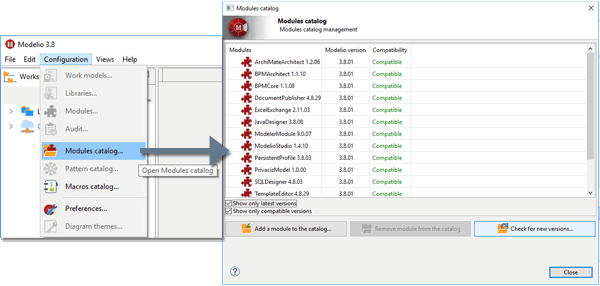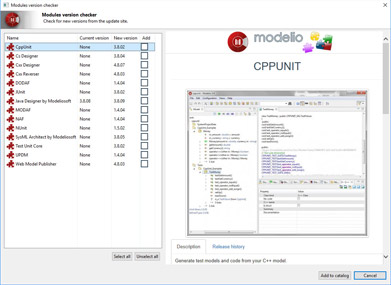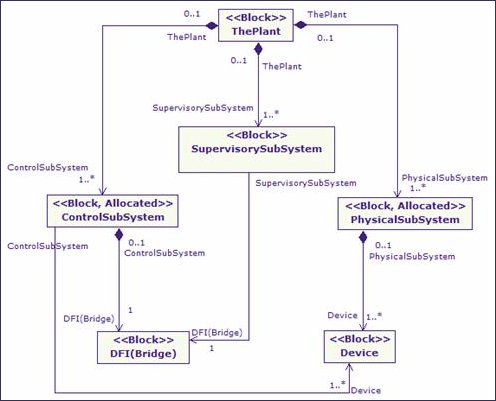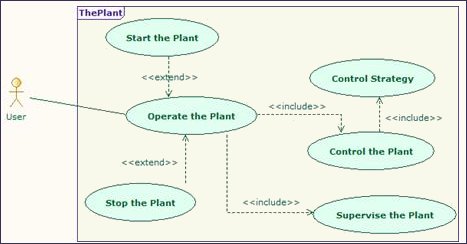This demo allows you to discover the functional and ergonomic richness of Modelio.
Learn how to quickly generate documentation from your models.
Find out how you can boost your Java productivity and quality with Modelio and UML using Modelio Java Designer.
Learn how Modelio can automatically generate Java utility methods and keep them up-to-date when the model is modified.
Learn how to generate a JUnit test model from a Java model.
Demo model governance within enterprises (contains sound).
The Modelio modules catalog is a list of all modules which are known to your local Modelio installation. By default, the modules that appear in the modules catalog are those provided with your product installation. You can add other Softeam modules.
Note: Adding a module to the modules catalog does not automatically select it for use in your current Modelio project. All modules that you want to use in a project must be selected via the "Configuration/Modules…" context menu command.


The module is now available to be used in your projects.
Please note that commercial modules need a valid license in order to be used in your projects.
Let us first look at the modeling of the global system structure as illustrated in the image on the right. This figure illustrates the composition of the system and the internal interactions, mainly by using a SysML block diagram. Here, the unit has been composed of three subsystems:
As shown in the image, the control subsystem controls the physical subsystem by means of certain smart devices.

Depending on the customizable document template used, Modelio is able to generate documents that meet your objectives and document standards.
(Click on the images below to access the corresponding documentation)
More information about the Modelio Document Publisher module
Automatic document generation is one of the many features of the Modelio environment. Here, in this particular case related to the INCOSE 2012 Tool Vendor Challenge (TVC) Solution, an automatic OpenXML document was generated from the modeled project.
You can also consult a PDF version of this document.
The Web Model enables designers and project managers to review the complete specifications of a system (for example, hierarchy, system composition, etc.) without having to install Modelio. This can also be beneficial for off-line usage. These specifications in turn can be commented upon by reviewers, enabling system designers to carry out any necessary modifications, and resulting in increased synergy.
The figure on the right provides an abstract overview of system behavior through a SysML use case diagram. The use case illustrates the system behavior that is visible to the end user and external to the system. In the figure, there are several use cases present, related to how the system is operated, controlled, supervised etc. Here, plant refers to the experimental industrial automation unit.
